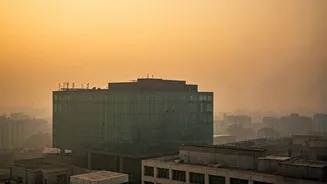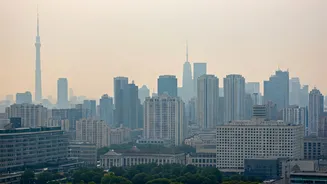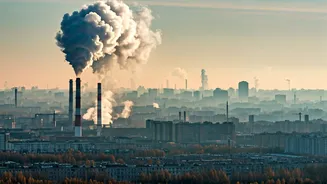Understanding Pollution's Risks
Air pollution poses a serious threat to public health, and its impact is felt across many regions. Inhaling polluted air introduces harmful particles and gases
into the respiratory system, which can trigger a range of health issues. These might include respiratory infections, exacerbation of existing conditions such as asthma, and an increased risk of long-term problems such as chronic obstructive pulmonary disease (COPD) and even cardiovascular disease. The level of impact depends greatly on the duration and intensity of exposure, along with the specific composition of pollutants. It's important to be aware of these risks to take proactive measures to safeguard your respiratory health and overall well-being. Therefore, knowing how to mitigate the harmful impacts of air pollution is essential, and this article will provide some useful advice.
The 20-20-20 Technique
The 20-20-20 breathing technique is a simple, yet potent, method recommended by pulmonologists to help mitigate the harmful effects of air pollution. This technique involves taking 20 breaths, each lasting 20 seconds, with the aim to enhance oxygen intake and promote deeper, more effective breathing. It can be easily practiced in any environment and requires no special equipment, making it a convenient tool for improving respiratory health. It works by encouraging the full use of the lungs, which can help in filtering out some of the pollutants and ensuring a better exchange of oxygen and carbon dioxide. To practice this, take a slow, deep breath in for about 5 seconds, hold the breath for another 5 seconds, and then exhale slowly and completely for 10 seconds. Repeating this cycle for 20 times can significantly assist in reducing the adverse effects of air pollution.
Practicing the Technique
Incorporating the 20-20-20 breathing technique into your daily routine is straightforward. It’s most beneficial when practiced in a place with relatively cleaner air, if possible, but can be done almost anywhere. Start by finding a comfortable posture, either sitting or standing, and closing your eyes to focus more intently on the breath. Inhale slowly and deeply, letting your belly expand fully as your lungs fill with air. Hold the breath momentarily, focusing on the sensations of the air moving in your body. Then, exhale slowly and completely, allowing all the air to escape. This mindful approach ensures that each breath is maximized for its cleansing effects and provides a moment of calm. Practicing this technique at least once a day, or more frequently when you anticipate exposure to high levels of pollution, will help make it part of your routine.
Beyond Breathing Exercises
While the 20-20-20 breathing technique offers immediate relief, it's not the only approach to dealing with the impact of pollution. There are other measures you can take to shield yourself from polluted air. Wearing an N95 mask or a similar respirator can physically block particulate matter from entering your respiratory system. It is also important to stay indoors during periods of high pollution, particularly during peak traffic hours or when air quality advisories are in effect. Ensuring adequate hydration helps to keep the respiratory passages moist, which may assist in trapping pollutants. Additionally, staying informed about local air quality levels and pollution forecasts from trusted sources will let you take proactive steps to protect your health. When it comes to maintaining respiratory health, a combination of methods will yield the best results.
Long-Term Strategies
The fight against air pollution requires a broader perspective, focusing on long-term actions. Advocating for cleaner energy sources, such as solar or wind power, to decrease reliance on polluting fuels, can contribute significantly. Supporting public transportation and using eco-friendly modes of transport, like cycling or walking, will contribute to reducing emissions from vehicles. Furthermore, planting trees and supporting urban green spaces help in purifying the air by absorbing pollutants and releasing oxygen. Promoting public awareness and supporting policies that enforce stricter emissions standards for industries and vehicles are equally important. Engaging with local authorities and communities to demand better air quality standards is crucial for establishing and sustaining a healthier environment for future generations. All these efforts, both small and large, can collectively help create a safer, less polluted world.















